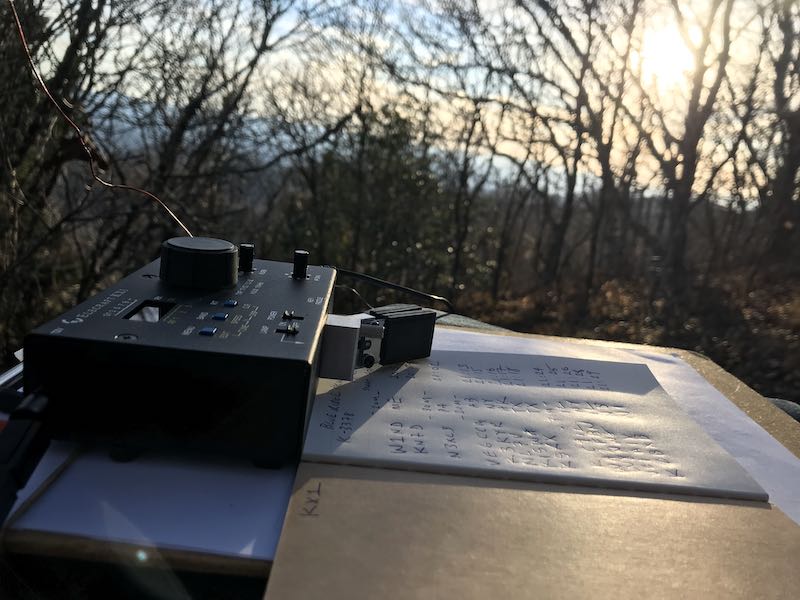 SWLing Post readers: I originally posted the following article on QRPer.com where I publish most of my ham radio field reports. It was the first full Parks On The Air activation with my recently re-acquired Elecraft KX1 transceiver and it was very memorable. I hope you enjoy:
SWLing Post readers: I originally posted the following article on QRPer.com where I publish most of my ham radio field reports. It was the first full Parks On The Air activation with my recently re-acquired Elecraft KX1 transceiver and it was very memorable. I hope you enjoy:
Yesterday [Saturday, November 14, 2020] my family decided to make an impromptu trip to one of our favorite spots on the Blue Ridge Parkway at Richland Balsam–the highest point on the BRP.
Of course, it was a good opportunity to fit in a Parks On The Air (POTA) activation, but I had also hoped to activate Richland Balsam for Summits On The Air (SOTA) simultaneously.
It being well beyond leaf-looking season, we had hoped the BRP would be relatively quiet, but we were wrong.
Trail heads were absolutely jam-packed and overflowing with visitors and hikers. We’ve noticed a sharp hiker uptick this year in western North Carolina due in no small part to the Covid-19 pandemic. People see hiking as a safe “social-distance” activity outdoors, but ironically, hiker density on our single-track trails is just through the roof. One spends the bulk of a hike negotiating others on the trail.
The trail head to Richland Balsam was no exception. Typically, this time of year, we’d be the only people parked at the trail head but yesterday it was nearly parked full.
Being natives of western North Carolina, we know numerous side-trails and old logging/service roads along the parkway, so we picked one of our favorites very close to Richland Balsam.
We hiked to the summit of a nearby ridge line and I set up my POTA station with the “assistance” of Hazel who always seems to know how to get entangled in my antenna wires.
Taking a break from using the Icom IC-705, I brought my recently reacquired KX1 field radio kit.
Gear:
- Elecraft KX1 Field Kit (including connectors, paddles, and random wire antenna & counterpoise)
- Bioenno 6 aH LiFePo Battery
- Ham Radio Workbench DC Distribution Panel
- Arborist throw line
- GoRuck Bullet Ruck
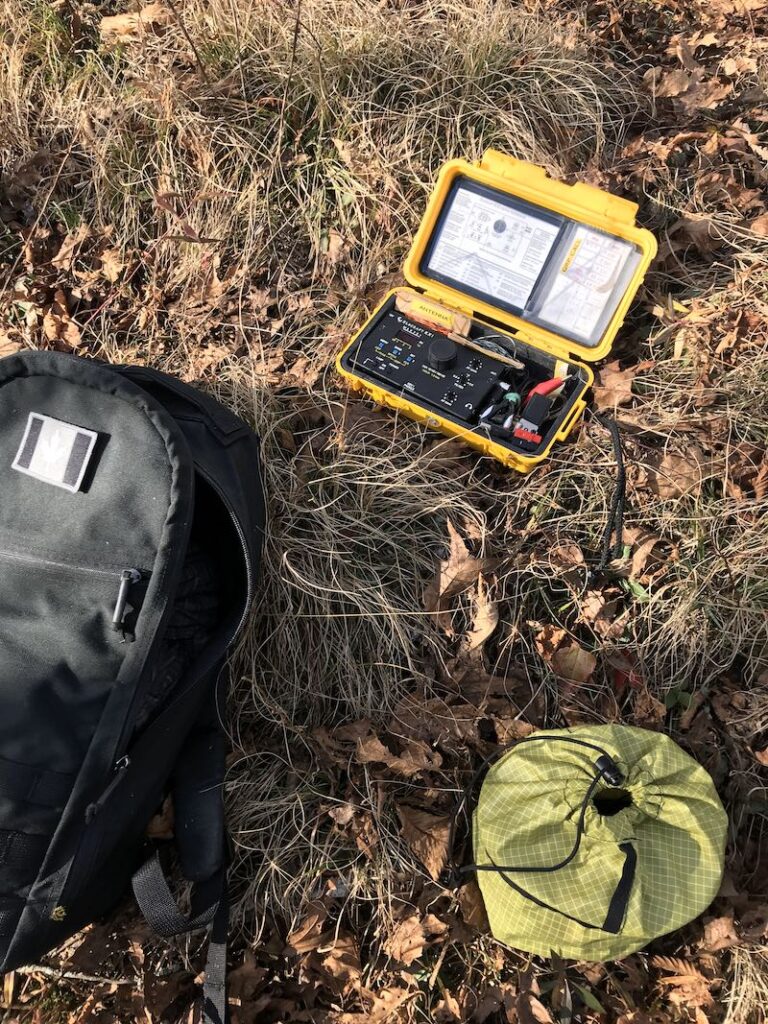 I carried a minimal amount of gear on this outing knowing that there would be hiking involved. Everything easily fit in my GoRuck Bullet Ruck backpack (including the large arborist throw line) with room to spare.
I carried a minimal amount of gear on this outing knowing that there would be hiking involved. Everything easily fit in my GoRuck Bullet Ruck backpack (including the large arborist throw line) with room to spare.
I took a bit of a risk on this activation: I put faith in the wire antenna lengths supplied with my new-to-me Elecraft KX1 travel kit. I did not cut these wires myself, rather, they are the lengths a previous owner cut, wound, and labeled for the kit.
With my previous KX1, I knew the ATU was pretty darn good at finding matches for 40, 30, and 20 meters on short lengths of wire, so I threw caution to the wind and didn’t pack an additional antenna option (although I could have hiked back to the car where I had the CHA MPAS Lite–but that would have cut too much time from the activation).
I didn’t use internal batteries in the KX1, rather, I opted for my Bioenno 6 aH LiFePo battery which could have easily powered the KX1 the entire day.
I deployed the antenna wire in a nearby (rather short) tree, laid the counterpoise on the ground, then tried tuning up on the 40 meter band.
No dice.
The ATU was able to achieve a 2.7:1 match, but I don’t like pushing QRP radios above a 2:1 match if I don’t have to. I felt the radiator wire was pretty short (although I’ve yet to measure it), so clipping it would only make it less resonant on 40 meters.
Instead, I moved up to the 20 meter band where I easily obtained a 1:1 match.
I started calling CQ POTA and within a couple of minutes snagged two stations–then things went quiet.
Since I was a bit pressed for time, I moved to the 30 meter band where, once again, I got a 1:1 match.
I quickly logged one more station (trusty N3XLS!) then nothing for 10 minutes.
Those minutes felt like an eternity since I really wanted to make this a quick activation. I knew, too, that propagation was fickle; my buddy Mike told me the Bz numbers had gone below negative two only an hour before the activation. I felt like being stuck on the higher bands would not be to my advantage.
Still, I moved back up to 20 meters and try calling again.
Then some radio magic happened…
Somehow, a propagation path to the north west opened up and the first op to answer my call was VE6CCA in Alberta. That was surprising! Then I worked K3KYR in New York immediately after.
It was the next operator’s call that almost made me fall off my rock: NL7V in North Pole, Alaska.
In all of my years doing QRP field activations, I’ve never had the fortune of putting a station from Alaska in the logs. Alaska is a tough catch on the best of days here in North Carolina–it’s much easier for me to work stations further away in Europe than in AK.
Of all days, I would have never anticipated it happening during this particular activation as I was using the most simple, cheap antenna possible: two thin random lengths of (likely discarded) wire.
People ask why I love radio? “Exhibit A”, friends!
After working NL7V I had a nice bunch of POTA hunters call me. I logged them as quickly as I could.
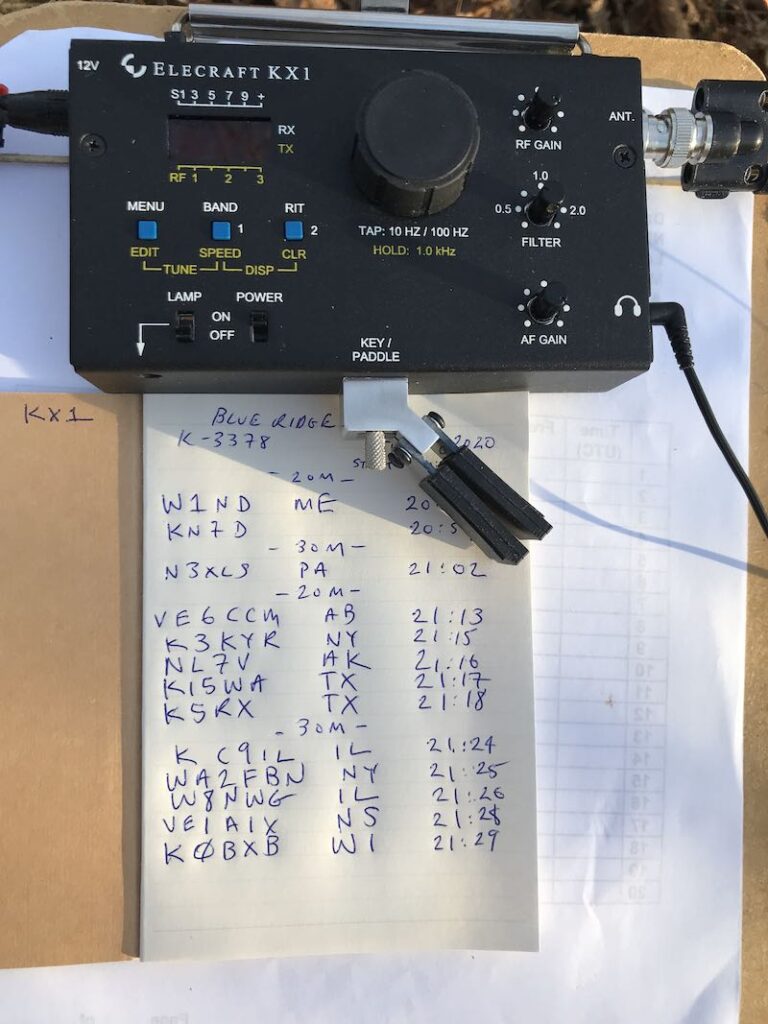 I eventually moved back to 30 meters to see if I could collect a couple more stations and easily added five more. I made one final CQ POTA call and when there was no answer, I quickly sent QRT de K4SWL and turned off the radio.
I eventually moved back to 30 meters to see if I could collect a couple more stations and easily added five more. I made one final CQ POTA call and when there was no answer, I quickly sent QRT de K4SWL and turned off the radio.
Here’s a map of my contacts from QSOmap.org:
I still can’t believe my three watts and a wire yielded a contact approximately 3,300 miles (5311 km) away as the crow flies.
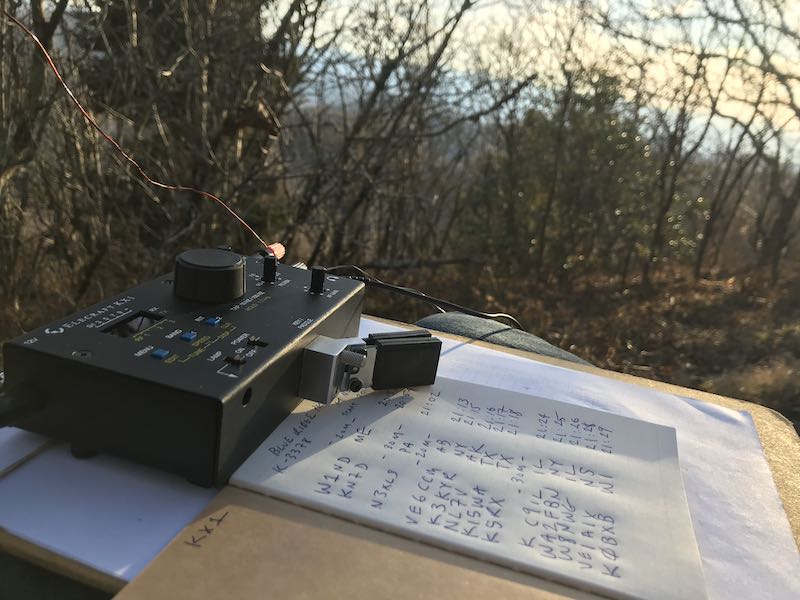 This is what I love about field radio (and radio in general): although you do what you can to maximize the performance of your radio and your antenna, sometimes propagation gives you a boost when you least expect it. It’s this sense of wireless adventure and wonder that keeps me hooked!
This is what I love about field radio (and radio in general): although you do what you can to maximize the performance of your radio and your antenna, sometimes propagation gives you a boost when you least expect it. It’s this sense of wireless adventure and wonder that keeps me hooked!

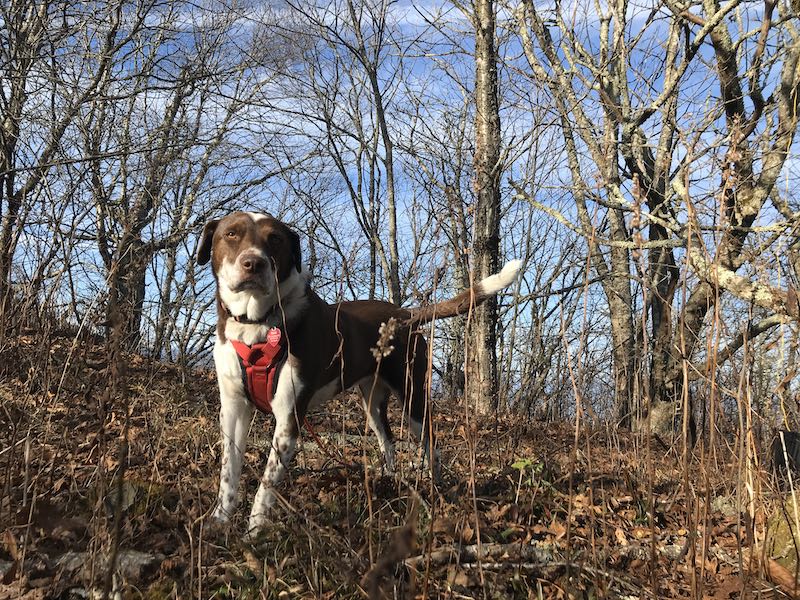
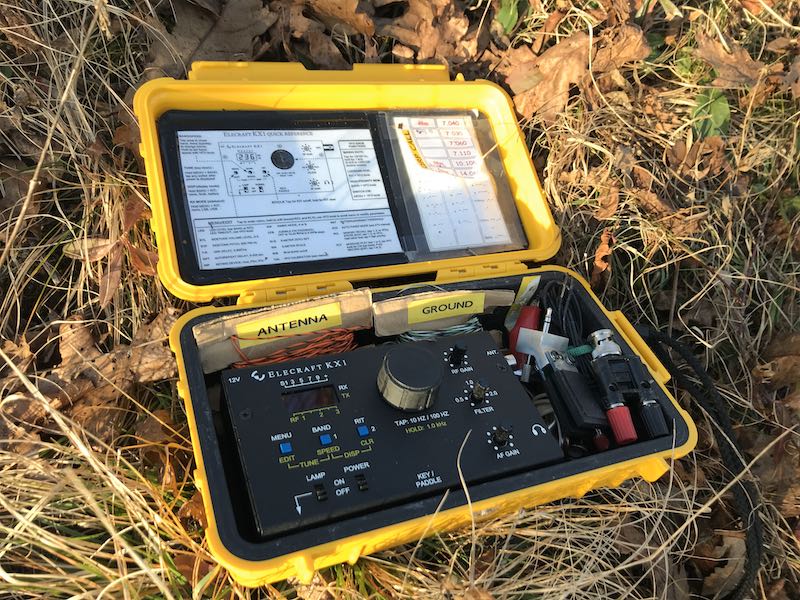
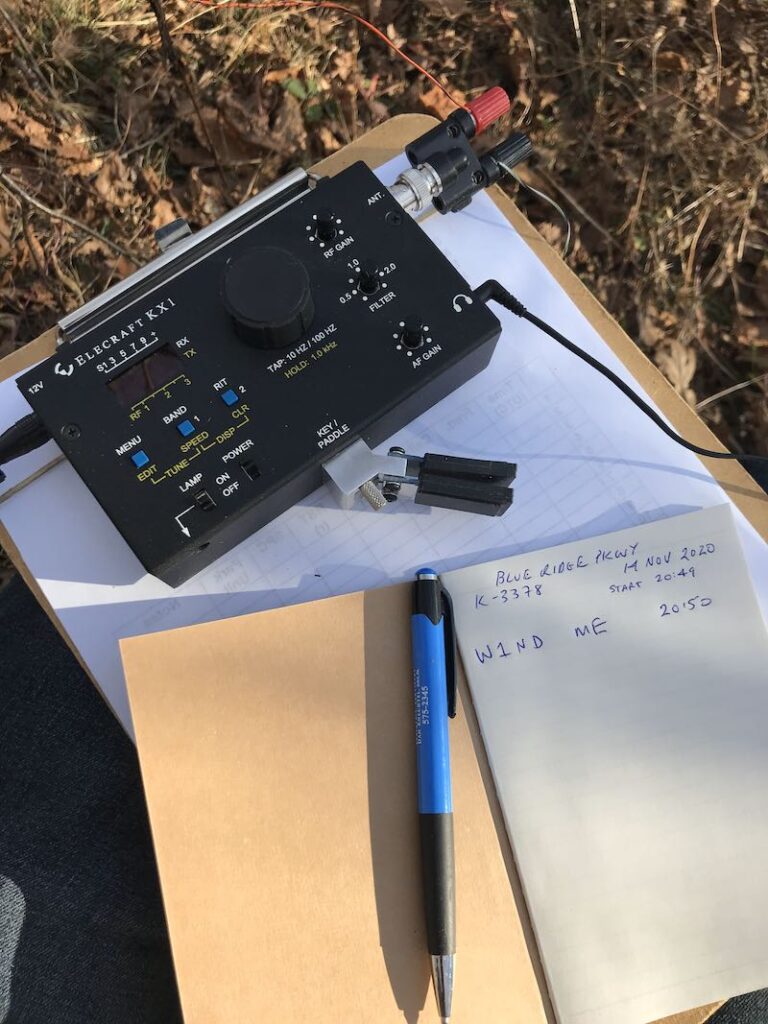
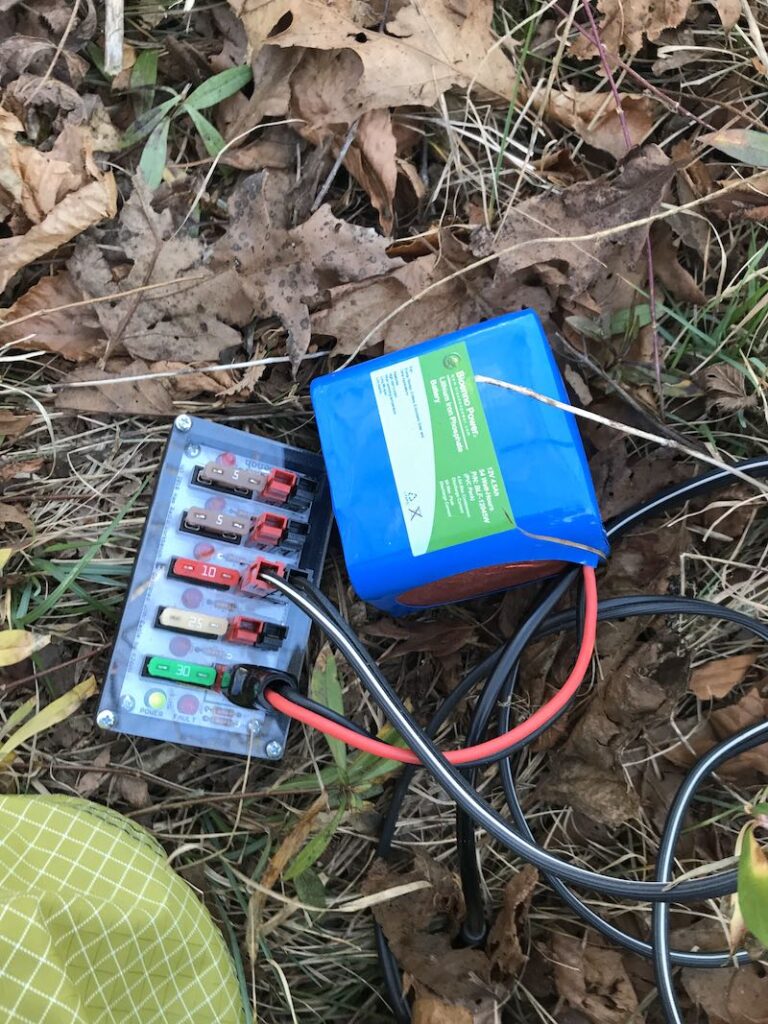
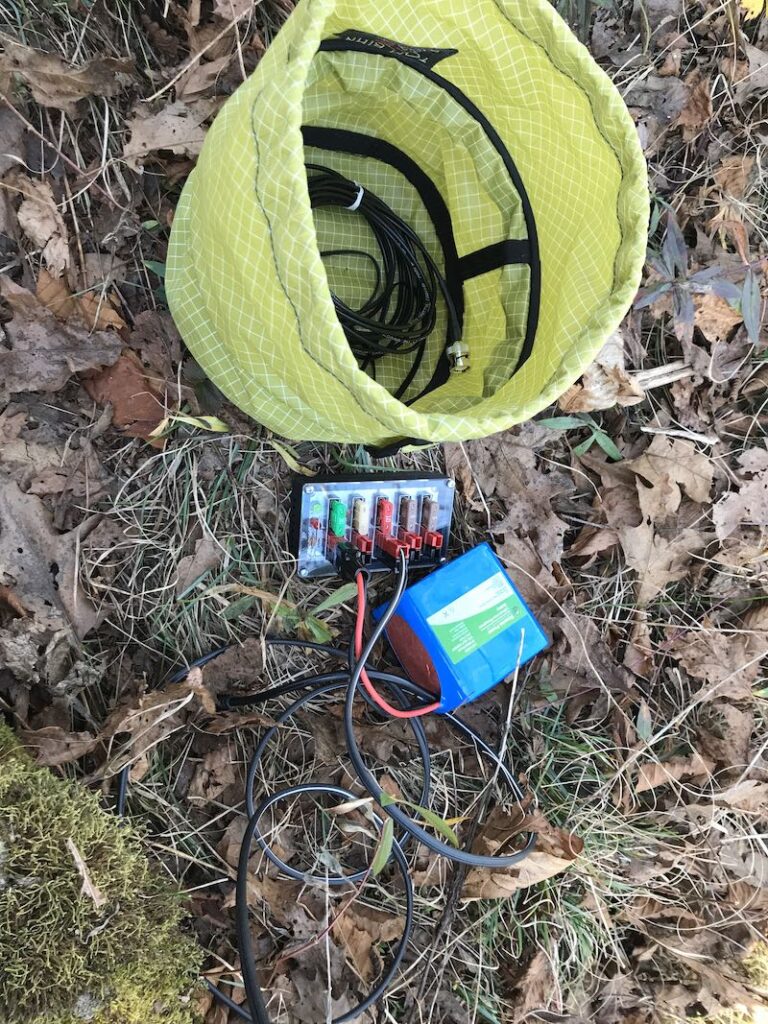


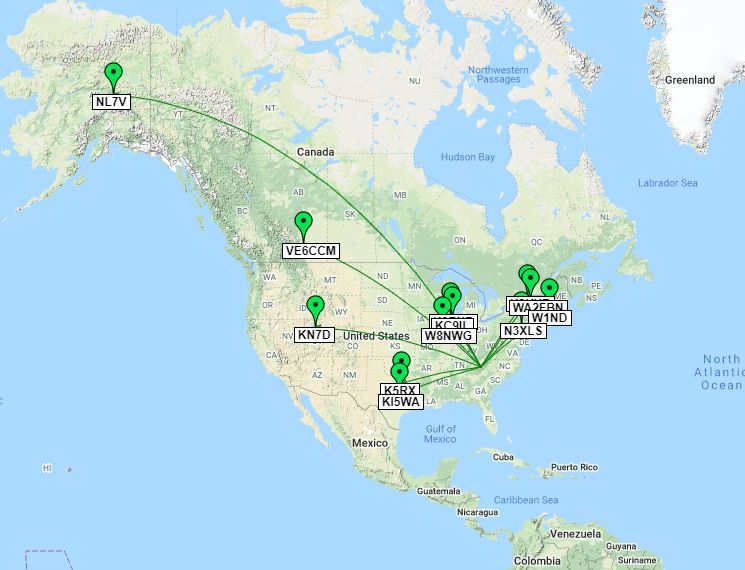
“I still can’t believe my three watts and a wire yielded a contact approximately 3,300 miles (5311 km) away”
This would have, no doubt, have been the feeling of ‘Secret Army’, WW2 resistance group, SOE radio operators back then.
Good to read your similar experiences in the field.
Sounds like a great operating event, I know what you mean about the trail traffic. When the propagation gods are smiling it makes playing radio so much more exciting. As a new ham in the early 1990’s I was blown away by the DX I was able to work on 5 watts. As we head up out of the solar doldrums let’s hope we see those times again. It’s even sweeter when you are QRP portable.
Steve, KZ4TN
NE Tennessee
Congratulations and spot on, Thomas1 Yes, that’s the stuff that keeps one hooked. Playing radio is a lot about persistence and every now and then there’s a nice reward for really meaning it. 🙂
I should never have sold my HW8, but it was too successful! GVK [England to Australia] on 2 W on 14 MHz to a bit of enamelled wire [~1978 at university]. I suppose that was about 5,000 miles per watt. I know others push the limit in the milliwatt levels, but I wasn’t that crazy 🙂 Onwards and upwards, Thomas!